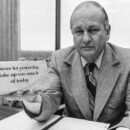The Wages Of Indifference: Game’s Failure to Honor Public Sector Hurts Growth Efforts

The golf industry is not of the same mind on all issues, but if there is one issue about which there is near unanimity it is the industry’s alarm at the closure of so many of the 3-par, 9-hole and executive length public courses central to reigniting growth.
Losing courses that were built at the end of the great expansionary cycle and often premised on business models unsustainable in a down market or losing courses in communities passed by time – these are the things of overdue correction. But losing facilities the game has traditionally used to introduce the game to kids, beginners, young adults and counterintuitive demographics – that is the stuff of disaster. And a “disaster” arguably of the industry’s own making.
The game’s leadership organizations never appreciated or even so much as acknowledged the role governments played in adding golf to the list of open space/recreational activities worthy of public investment. It took as a given something that was anything but – the idea that dedicating 100 plus acres of publicly owned land to golf was on a par with the societal benefit of dedicating public land to open space, sports fields, youth sports, trail systems, swimming pools, public gardens and other universally accessible activities.
For the bulk of the game’s history, publicly owned parkland golf courses were subsidized by general fund expenditures. They were built entirely by public monies and for decades sustained more by continuing outlays of public monies than by user fees – fees not set by the market but rather by governments’ commitment to making golf available to Everyman, not just the most affluent among us. Once identified as a public amenity to be financed in small part by user fees but in larger part by general tax revenues, municipal golf courses were transformed into cash cows. Municipalities, some of which had continued to provide the service through public employees but many more of which had begun to provide the service through private management firms, began thinking of themselves less as providers of public services than members of a rentier class entitled to large returns on a nest egg for which they no longer expended much if any effort. Once that happened, municipal golf courses were expected to continue delivering net revenues to their parkland systems, and once that the expectation was no longer being met, the same governments that in another generation understood their obligation as subsidizing golf in the public interest began to understand their obligation as converting them to uses more amenable to generalized access – e.g., soccer, baseball, skate parks, picnic areas, etc., — otherwise known as those recreational activities that have always conflated their interest with the public interest and done so very loudly.
This death spiral is playing itself out throughout the nation and with it many of the programs designed to rekindle growth. Laudable junior and developmental programs perfectly suited to those courses least capable of turning a profit are ill-suited to championship layouts compelled to drive revenue for enterprise funds or daily fee properties suffering through the industry’s malaise or private clubs never designed to serve public purposes in the first place.
The industry did this to itself, and it did it, because too many of its practitioners became fixated on market metrics at the expense of recognizing the role played by other factors, among them government largesse. Now that the market is telling the industry that it needs to be downsized, particularly in the sector the business understands as the sine qua non of growth efforts, it has nowhere to turn. And governments, which have been ignored by the game at best and denigrated at worst, are hardly inclined to come to the game’s aid now that the industry’s interests are better served by going back to municipal golf’s first principles. Municipalities are inclined to do precisely what most of them are now doing – suggest that the industry raise its own monies to subsidize growth vehicles. That’s a proposition the industry simply cannot afford; it never could.
Is the industry up to the task suggested here – recalibrating the narrative so that it celebrates the connection between the game of golf and the public good in a way that acknowledges and appreciates the public sector’s contribution to it? Yes, but only if it recognizes the need. And considering past performance, that’s very much an open question.











